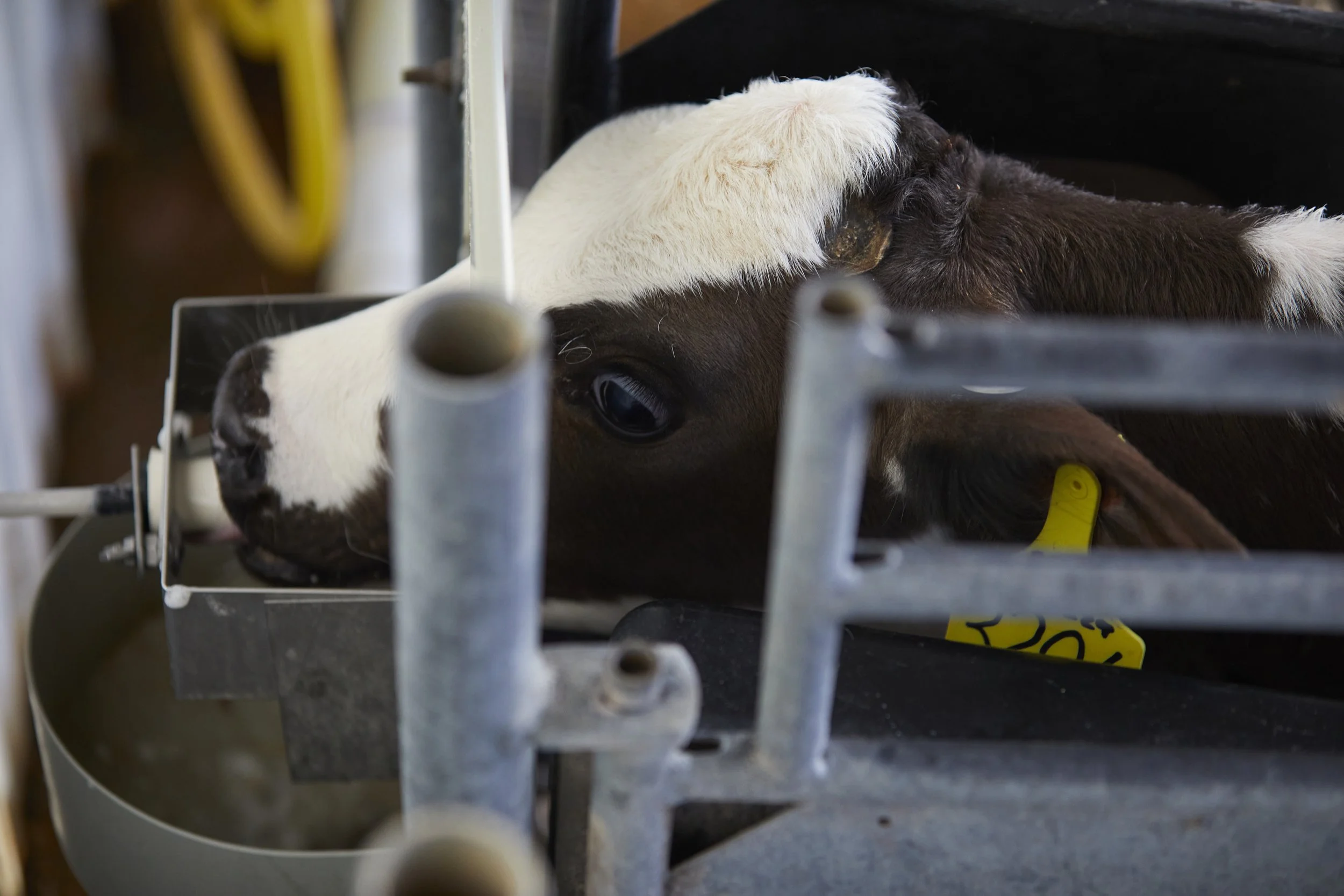Dairy X Beef Animals are Changing the Calf Raising Landscape
It was just a few years ago that we started hearing about dairies breeding some of their cows to beef sires, with the goal of adding value to their offspring. Now, those dairy-beef crosses are becoming a common – if not dominant – presence in calf barns and hutches across the country.
“So far there is little research focusing specifically on dairy-beef calves. But enough of them have gone through the production chain for us to at least develop some on-farm impressions of them.”
With newborn dairy-beef calves fetching in the neighborhood of $100 per head more than purebred male Holsteins, it’s an easy decision on the dairy side to strategically incorporate beef sires into their breeding programs. That process is being fine-tuned, with most dairies now embracing genomic data to choose those sires. Some buyers currently are seeking specific breed crosses, and some programs are dictating specific sires within a breed.
The goal of dairy-beef breeding is to produce calves that finish efficiently and cut out consistently, on par with full-blood beef animals. Dairies that succeed at this will find a ready market for their calves. The scale at which large dairies can produce calves is much greater than the average beef herd, plus they can provide a year-round supply.
If we’re going to be raising a lot more of these calves, we need to start embracing their unique characteristics. So far there is little research focusing specifically on dairy-beef calves. But enough of them have gone through the production chain for us to at least develop some on-farm impressions of them, including:
1. They need less protein and more fat in their liquid rations
When we’re raising Holstein heifer calves as replacements, our goal is lean tissue and stature growth. But for calves headed to the feedlot, we don’t want a large frame. So high-protein milk replacers, which tend to be more expensive, are not necessary or even desirable for dairy-beef crossbreds. We see these calves doing well on milk replacer formulations of 20-22% protein and 22-24% fat.
2. Starter grain also should be lower in protein
Likewise, dairy-beef crosses do not require the 18-22% protein starter grain formulations we feed Holstein heifers. Starter grains with 16% protein appear to work well for them.
3. They’re a little feistier
We know that most crossbred animals have more hybrid vigor than purebreds, and that appears to hold true for these calves. They usually are aggressive eaters, although they also are reported to often be a little more stubborn to start on a bottle. But once they’re off and running, they are energetic, active, and generally very healthy animals.
4. Sickness is less, but also harder to detect
Because they carry more fat cover, have heavier hair coats and are hearty eaters, dairy-beef crosses tend to endure scours episodes more successfully. However, their inherent vigor actually works against them when it comes to pneumonia. Especially in older calves around 9-10 weeks, they don’t readily show common signs of pneumonia, like shrinking in the flank and behaving more timidly. By the time they do exhibit these behaviors, their pneumonia may be so advanced that it is too late to treat it effectively.
5. Death loss is lower
Calf raisers report losing fewer of these animals to death. That is likely due a combination of their overall vitality, and the fact that they probably get a little extra attention at birth compared to purebred male Holsteins. Because they are worth double the value or more, dairy-beef crosses are more likely to be fed colostrum and receive care similar to that given to replacement heifer calves.
6. Weaning can be sooner
While purebred Holsteins – both steers and heifers – tend to do best at a weaning age of about 8 weeks, dairy-beef crosses are being successfully weaned at around 6 weeks of age.
7. They’re better gainers
Raising calves to 600 pounds by 6 months of age is being done routinely with dairy-beef crosses. It generally takes Holstein steers about a month longer to hit that weight. Holsteins tend to stall out at about 325 pounds, while the crossbreds appear to consistently gain right through that threshold. Producers report steady average daily gains (ADG) of about 3.25 pounds up to 600 pounds of bodyweight for dairy-beef crosses, compared to an ADG range of about 2.7 to 3.2 pounds for purebred Holstein steers.
We will almost certainly continue to see more dairy-beef calves – both steers and heifers, all destined for feedlots – in the months and years ahead. It’s a quickly changing dynamic for which calf raisers need to be prepared.





It takes hard work and considerable investment to create a newborn calf. So, when that calf hits the ground, we want to do everything we can to give it the best possible start to a healthy and productive life.